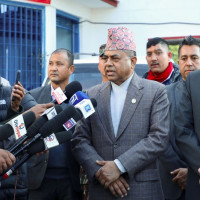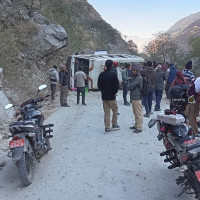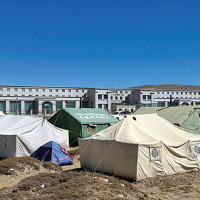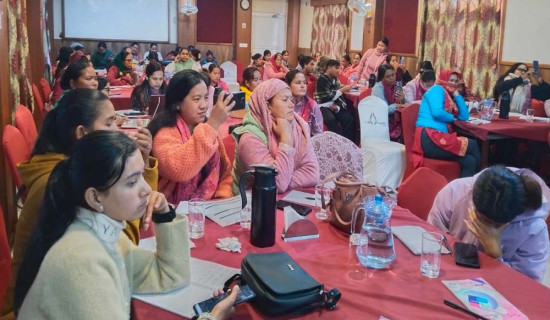- Wednesday, 24 December 2025
A Recipe For Internal Party Reform
Ballav Dahal
This publication includes a total of 13 articles focussing on the main theme of internal party democracy. Youth leadership, gender, resources of national parties, Nepali women's struggles and challenges, among others, are also dealt with. While NDI has brought out such a worthwhile publication with the support of USAID, international and Nepali parliamentarians and experts have contributed their quite comprehensive write-ups for it. It is worth mentioning that most of the writers are women with distinct recognition and identity. The booklet highlights some valid concerns from a Nepali and international perspective. Reforms in electoral systems within political parties, issues of women and marginalised communities in parties, training and education processes in parties, and experiences of international practitioners relevant to Nepal are some of such concerns.
The publication hints at how internal party reform can help prevent political parties from deviating from democratic practices and how the involvement of youths in political parties is vital for parties to be electorally successful.
This provides a lot of insights into how shifting party resources from the centre to the local level could help build up a more active membership base; how the principle of internal party democracy can be revived for the benefit of all party members; and how the introduction of varied internal party reform instruments can help increase participation and representation of women, youths and varied marginalised communities are other topics included in it. As stated by Deborah Healy, Senior Country Director at NDI Nepal, these thought-provoking articles could kindle conversations on how the political parties in Nepal can internally reflect on their structures to help broaden their electoral appeal.
In her article ‘Be A Junkiri- Not An Animated Dream', Birgitta Ohisson, NDI's Director of Political Party Programmes, writes: "As half of the population of Nepal is under the age of 25, the country's political landscape desperately needs to change." Ohisson, also a former Swedish Minister for European Affairs, urges political parties to attract young people in general and young women in particular. She calls on every political party to be a firefly symbolising hope, empowerment and inspiration.
Similarly, Arta Dade, an Albanian parliamentarian, in her write-up titled ‘Safeguards For International Party Democracy’, calls for drastic reforms within parties. According to her, the more internally democratic political parties are, the more democratic society will become to respond to people's expectations.
In her piece ‘Youth Leadership In Political Parties’, Anupa Shrestha underlines the need for political parties to motivate greater youth involvement in politics and provide them with leadership opportunities.
Binu Subedi, in her article ‘Internal Democracy In Political Parties’, calls on parties to follow the principles of inclusion, social justice and equality as demanded by women and other marginalised communities.
She shows her concern over the apathy on the part of political parties to consolidate democratic values within their structures. She says even the parties that have fought for democracy have been found only linking democracy with periodic elections and citizens’ suffrage.
Likewise, Corien Jonker, in her piece ‘Internal Party Reform: The Importance of Gender Equality, suggests implementing the constitutional provisions regarding gender to bridge the gender gap in Nepal. Presenting a Moldovan case study, Corien, a former member of the Dutch parliament, shows how the formulation and enactment of gender action plans had contributed to strengthening and formalising the commitment of political parties to advance gender equality and provide a baseline for progress.
In her write-up ‘Democracy and Governance within Political Parties', Dolma Tamang, a member of the Nepal Women's Association of Nepali Congress, suggested that every policy decision should be conducted in a democratic and institutional manner as specified by the statutes and rules of political parties to make tangible inward reforms. Johan Hamels has drawn the party leadership's attention toward transferring resources from the centre to local councillors.
The political parties in the country could find the ideas forwarded by all the writers to be worthwhile for promoting democracy within them. Thus, the publication could prove to be a recipe for them to change.



-original-thumb.jpg)













